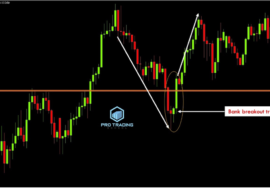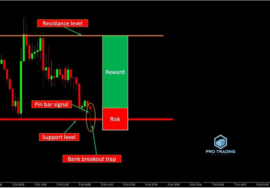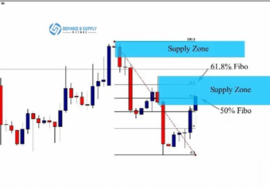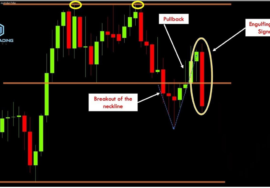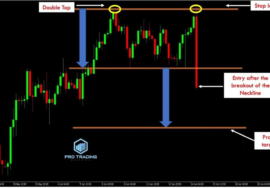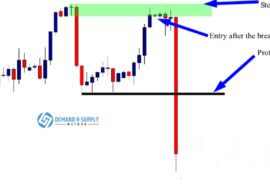
Why you should study supply & demand trading system
When starting any business, it’s essential to thoroughly understand every aspect of it; otherwise, success will be elusive. The same principle applies to trading in the financial markets: without a deep understanding of how the market operates, you won’t be able to consistently generate profits.
The financial markets are dominated by two main players: market makers and retail traders. Market makers, including banks and financial institutions, account for the majority of trading volume. These entities trade millions of dollars daily, giving them the power to control and manipulate the market, driving prices wherever they desire. Not only do they employ the best technical analysts, but they also understand how retail traders think and operate—they know where your stop losses and profit targets are. This allows them to manipulate the market and take your money at will, a truth that is often unspoken.
Let me illustrate how market makers can anticipate and exploit your trading strategies. Consider the EUR/USD 4H chart below:

In the chart, the market reached a key resistance level with a high probability of holding. A bearish pin bar with a false breakout formed at this level, signaling a high-probability sell opportunity. As a retail trader, you might decide to sell after the pin bar closes, placing a stop loss just above the resistance level or the upper shadow of the pin bar. You might feel excited, expecting a big win. But look at what happens next:

The market would have triggered your stop loss twice before dropping significantly to the support level where you might have set your profit target. When your stop loss gets hit like this, it can be disheartening, making you feel like someone is watching your trades. This scenario is common across all financial markets, and if you’re unaware of it, you’ll frequently fall into the traps set by banks and financial institutions.
Here’s another example from the chart below:

In this case, the market was in a downtrend. Upon breaking a support level, breakout traders would typically short the market to capitalize on the downtrend. If you trade breakouts, you might have taken this trade, feeling confident because the support level was decisively broken, suggesting the market would continue downward. But then, observe what happens next:

After the support level broke, banks and financial institutions shifted tactics, knowing that many retail traders had entered the market to follow the trend. They trapped these traders using a false breakout strategy. If you’re aware of this trap, you would instead buy after the false breakout, profiting because you understand the underlying manipulation.
Banks and financial institutions operate within specific zones where they buy and sell in the market. If you can identify these zones, you can align your trades with theirs, making money alongside them rather than against them. Consider this example from the EUR/USD 4H chart below:

You can see that the market experienced a sharp decline, evidenced by the strong red candlesticks. This move was initiated by banks who deemed the price level ideal for shorting the market. When the market revisits this zone, the same banks will liquidate the rest of their position, and other banks might also sell at the same price level, leading to another strong downward move. Look at what happens next:

The market indeed dropped sharply when it retested the zone. This is one of the strategies that banks and financial institutions use to trade the market. If you understand this strategy, you can easily profit from such trades. Notably, these zones frequently appear in the market, as seen in your charts.
The examples I’ve provided are just a few of the many strategies market makers use to manipulate the market and take money from retail traders. Now, do you see why it’s crucial to study and understand how banks and financial institutions trade?
I want you to shift your perspective on the market. Instead of viewing it as a battle between buyers and sellers, see it as market makers versus retail traders. Market makers know what you’re doing, are more powerful than you, and are in the market to trap you and take your money.
The strategies I’m about to share work 97% of the time and are effective across all financial markets because they are the strategies used by the major players. If you follow what I’m going to share, I promise that your trading results will dramatically improve.
Please take your time to read everything; don’t skip any part, as everything I’ve shared is crucial if you want to join the 5% of successful traders.
Conclusion
This post has introduced you to the concept of supply and demand levels and how banks trap retail traders. You can subscribe to our signal group for free when you open an Octafx account and fund it with $100.



